Mentuhotep IV
De Wikipedia, la enciclopedia libre
Nebtauyra Mentuhotep, o Mentuhotep IV fue el último faraón de la dinastía XIvon Beckerath). gobernando de c. 1983 a 1976 a. C. (
Su nombre, Nebtauyra, aparece en la Sala de antepasados de Karnak, después de Seneferkara (Mentuhotep III)
No figura en la Lista Real de Abidos, tampoco en la Lista Real de Saqqara, ni en el Canon Real de Turín.
Testimonios de su época [editar]
Es conocido por varias inscripciones en Uadi Hammamat que narran la gran expedición a las costas del mar Rojo, al mando de su visir Amenemhat, para obtener piedra para el sarcófago real. También se describen “milagros” extraordinarios en el desierto, como el nacimiento de una tormenta y de una lluvia de gacelas en el bloque pétreo del que se obtendrá el sarcófago del rey.
Le sucedió Amenemhat I, posiblemente el visir descrito en las inscripciones de Uadi Hammamat, que lo destronó, aunque no hay evidencias convincentes que lo corroboren, siendo el primer faraón de la siguiente Dinastía XII.
Titulatura [editar]
| Titulatura | Jeroglífico | Transliteración (transcripción) - traducción - (procedencia) |
| Nombre de Horus: |
| nb t3uy (Nebtauy) Señor de las dos Tierras (Egipto) (J. Couyat, P. Montet, 1912, 110) |
| Nombre de Nebty: |
| nb t3uy (Nebtauy) Señor de las dos Tierras (Egipto) (J. Couyat, P. Montet, 1912, 110) |
| Nombre de Hor-Nub: |
| nṯru nb (Necheru nub) De oro Divino (J. Couyat, P. Montet, 1912, 110) |
| Nombre de Nesut-Bity: |
| nb t3uy rˁ (Nebtauyra) Ra, Señor de las dos Tierras (Egipto) (Lista Real de Karnak nº 31) |
| Nombre de Sa-Ra: |
| mn ṯ u ḥtp (Mentuhetep) Mentu está en paz, o Mentu está satisfecho (J. Couyat, P. Montet, 1912, 110) |
Referencias [editar]
- Referencias digitales
- http://www.digitalegypt.ucl.ac.uk//chronology/mentuhotepIV.html (en inglés)
- http://www.narmer.pl/dyn/11en.htm (en inglés)
| Predecesor: Mentuhotep III | Faraón Dinastía XI | Sucesor: Amenemhat I |
Categorías: Dinastía XI | Faraones
Mentuhotep IV
From Wikipedia, the free encyclopedia
| Mentuhotep IV | ||||
|---|---|---|---|---|
| Pharaoh of Egypt | ||||
| Reign | 1998–1991 BC, 11th dynasty | |||
| Predecessor | Mentuhotep III | |||
| Successor | Amenemhat I | |||
| Died | 1991 BC | |||
Nebtawyre Mentuhotep IV was the last king of the 11th Dynasty. He seems to fit into a 7 year period in the Turin Canon for which there is no recorded king, and is known from a few inscriptions in Wadi Hammamat that record expeditions to the Red Sea coast and to quarry stone for the royal monuments.
Despite being obscure (he is absent from the official king lists in Abydos), the inscriptions show the organization and makeup of a large expedition. The leader of an expedition to Wadi Hammamat, during the second year of Mentuhotep IV’s reign, was his vizier, Amenemhat, who is assumed to be the future king Amenemhet I, the first king of the 12th Dynasty, and Mentuhotep's immediate successor. It is assumed by some Egyptologists that Amenemhet either usurped the throne or assumed power after Mentuhotep IV died childless. There is currently no archaeological or textual evidence to prove that Mentuhotep was deposed by his Vizier or that he chose Amenemhet to be his designated successor.
[edit] References
- ^ King List (chronological)
- ^ Clayton, Peter A. Chronicle of the Pharaohs: The Reign-by-Reign Record of the Rulers and Dynasties of Ancient Egypt. Thames & Hudson. p72. 2006. ISBN 0-500-28628-0
[edit] Further reading
- W. Grajetzki, The Middle Kingdom of Ancient Egypt: History,Archaeology and Society, Duckworth, London 2006 ISBN 0-7156-3435-6, 25-26
| Preceded by Mentuhotep III | Pharaoh of Egypt Eleventh dynasty 1998 BC – 1991 BC | Succeeded by Amenemhat I |
Categories: Pharaohs of the Eleventh dynasty of Egypt | 1991 BC deaths
related articles
- Mentuhotep III
- Mentuhotep II
- TT280
- Meketre
- Eleventh dynasty of Egypt
- Monthu
- Neferkare, ninth dynasty
- Treasurer (Ancient Egypt)
- Abydos King List
- Neferkare Tereru
En otros idiomas
- Català
- Deutsch
- English
- Euskara
- Français
- Italiano
- 한국어
- Lietuvių
- Nederlands
- Polski
- Русский
- Srpskohrvatski / Српскохрватски
- Svenska
- Tiếng Việt
[AE-ES] una presentación espectacular sobre Egipto...
Hola Amigos
Mi direccion es : limaraster@gmail.com vale la pena, si tienen cuenta de correo que soporte el peso, vale la pena, sino me pueden dar una sugerencia para que puedan verlo.
salu2 y feliz año nuevo 2010!
Liliana Malvina
Argentina
##########################################
RSS Feed de Amigos de la Egiptología
http://www.egiptologia.com/index.php?format=feed&TYPE=rss
##########################################
Todo sobre Tutankhamon
http://www.egiptologia.com/todo-sobre-tutankhamon.html
Recomendamos: Arqueología
http://www.arqueologos.org
--------------------------------------------------------------
LISTA DE DISTRIBUCIÓN DE AMIGOS DE LA EGIPTOLOGÍA - AE
Gestión Altas-Bajas y consulta mensajes enviados:
http://www.egiptologia.com/lista-de-distribucion.html
Moderador: Víctor Rivas egiptologia@egiptologia.com
Amigos de la Egiptología: http://www.egiptologia.com
Los mensajes de Amigos de la Egiptología son distribuidos gracias al apoyo y colaboración técnica de RedIRIS Red Académica Española - http://www.rediris.es

Cargado el 6 de junio, 2008
Galería de Hans Ollermann
King Ramses II (also called Ramses the Great) 1279-1212 B.C.
2008_0605_141518AA
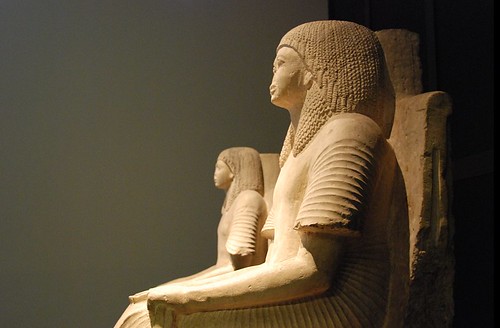
Ptahmes lived during the reign of pharaoh Ramses II.
He was chief steward in the Temple of Ptah in Memphis.
Ptahmes built his tomb in the desert of Saqqara.
Limestone.
From Saqqara.
19th dynasty, ca. 1250 B.C.
Rijksmuseum van Oudheden (State Museum of Antiquities), Leiden, The Netherlands.
Turijn 1984 Ramses II
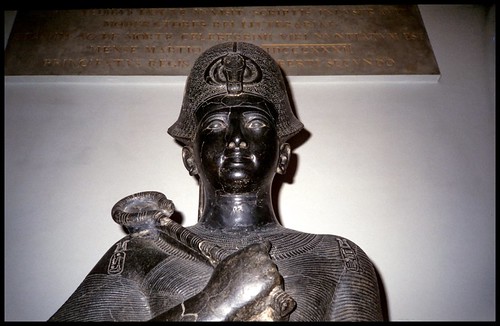
2008_0305_140933AA-
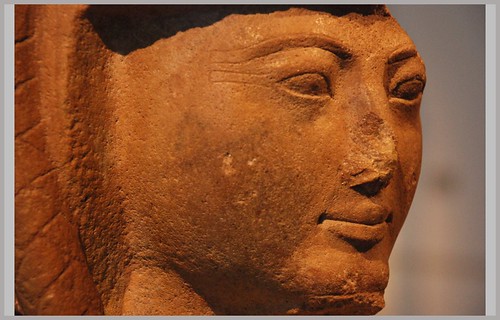
19th dynasty, circa 1260 B.C.
Quartzite.
Altes Museum, Berlin.
nicksflix  says:
says:
4 most inspiring photos means 4 favourites-as you know I love this sort of work Publicado hace 24 mese
Abu Simbel

Ramses II, Abu Simbel
2006_0610_123248AA
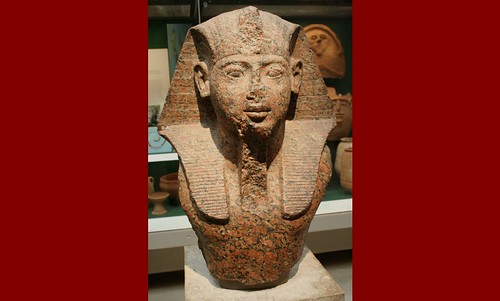
Made of red granite, this head, wearing a royal headdress, depicts a New Kingdom pharao, possibly Ramses II.
British Museum, London.
2006_0610_123253AA-
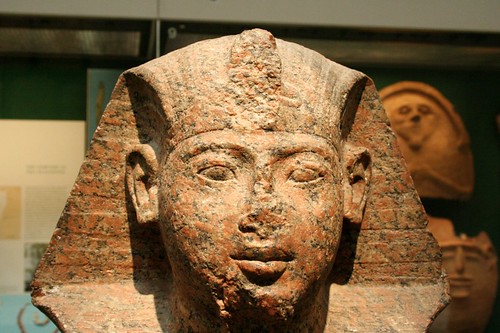
Made of red granite, this head, wearing a royal headdress, depicts a New Kingdom pharao, possibly Ramses II.
British Museum, London

![V30 [nb] nb](http://es.wikipedia.org/w/extensions/wikihiero/img/hiero_V30.png)









![N35 [n] n](http://es.wikipedia.org/w/extensions/wikihiero/img/hiero_N35.png)

![G43 [w] w](http://es.wikipedia.org/w/extensions/wikihiero/img/hiero_G43.png)

![X1 [t] t](http://es.wikipedia.org/w/extensions/wikihiero/img/hiero_X1.png)
![Q3 [p] p](http://es.wikipedia.org/w/extensions/wikihiero/img/hiero_Q3.png)


![N5 [ra] ra](http://en.wikipedia.org/w/extensions/wikihiero/img/hiero_N5.png)
![V30 [nb] nb](http://en.wikipedia.org/w/extensions/wikihiero/img/hiero_V30.png)


![Y5 [mn] mn](http://en.wikipedia.org/w/extensions/wikihiero/img/hiero_Y5.png)
![N35 [n] n](http://en.wikipedia.org/w/extensions/wikihiero/img/hiero_N35.png)
![V13 [T] T](http://en.wikipedia.org/w/extensions/wikihiero/img/hiero_V13.png)
![G43 [w] w](http://en.wikipedia.org/w/extensions/wikihiero/img/hiero_G43.png)
![R4 [Htp] Htp](http://en.wikipedia.org/w/extensions/wikihiero/img/hiero_R4.png)
![X1 [t] t](http://en.wikipedia.org/w/extensions/wikihiero/img/hiero_X1.png)
![Q3 [p] p](http://en.wikipedia.org/w/extensions/wikihiero/img/hiero_Q3.png)
